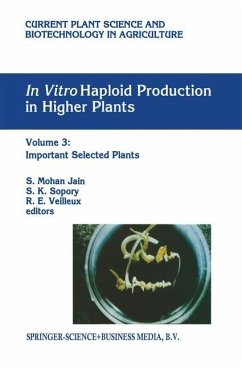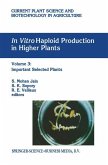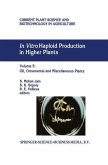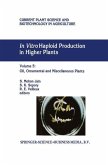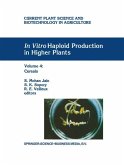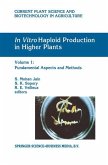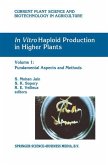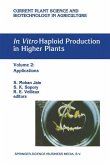Since the beginning of agricultural production, there has been a continuous effort to grow more and better quality food to feed ever increasing popula tions. Both improved cultural practices and improved crop plants have alIowed us to divert more human resources to non-agricultural activities while still increasing agricultural production. Malthusian population predictions continue to alarm agricultural researchers, especially plant breeders, to seek new technologies that will continue to allow us to produce more and better food by fewer people on less land. Both improvement of existing cultivars and development of new high-yielding cultivars are common goals for breeders of alI crops. In vitro haploid production is among the new technologies that show great promise toward the goal of increasing crop yields by making similar germplasm available for many crops that was used to implement one of the greatest plant breeding success stories of this century, i. e. , the development of hybrid maize by crosses of inbred lines. One of the main applications of anther culture has been to produce diploid homozygous pure lines in a single generation, thus saving many generations of backcrossing to reach homozygosity by traditional means or in crops where self-pollination is not possible. Because doubled haploids are equivalent to inbred lines, their value has been appreciated by plant breeders for decades. The search for natural haploids and methods to induce them has been ongoing since the beginning of the 20th century.
Hinweis: Dieser Artikel kann nur an eine deutsche Lieferadresse ausgeliefert werden.
Hinweis: Dieser Artikel kann nur an eine deutsche Lieferadresse ausgeliefert werden.
` ... can be recommended to all scientists being involved in haploidy research.' Journal of Plant Physiology (1997) ` ... written in clear language and supplemented with valuable references. I recommend this Volume as a rich source of information.' Acta Physiologiae Plantarum, 20:2 (1998) `This book is useful for plant breeders that are applying haploid induction in their breeding programmes, because well described and rather complete protocol-like reviews are presented. Furthermore this volume contains useful information for researchers that would like to apply this technology in the recalcitrant species described, because the basic information they may need is presented.' Scientia Horticulturae 73 (1998)
` ... can be recommended to all scientists being involved in haploidy research.'
Journal of Plant Physiology (1997)
` ... written in clear language and supplemented with valuable references. I recommend this Volume as a rich source of information.'
Acta Physiologiae Plantarum, 20:2 (1998)
`This book is useful for plant breeders that are applying haploid induction in their breeding programmes, because well described and rather complete protocol-like reviews are presented. Furthermore this volume contains useful information for researchers that would like to apply this technology in the recalcitrant species described, because the basic information they may need is presented.'
Scientia Horticulturae 73 (1998)
Journal of Plant Physiology (1997)
` ... written in clear language and supplemented with valuable references. I recommend this Volume as a rich source of information.'
Acta Physiologiae Plantarum, 20:2 (1998)
`This book is useful for plant breeders that are applying haploid induction in their breeding programmes, because well described and rather complete protocol-like reviews are presented. Furthermore this volume contains useful information for researchers that would like to apply this technology in the recalcitrant species described, because the basic information they may need is presented.'
Scientia Horticulturae 73 (1998)

